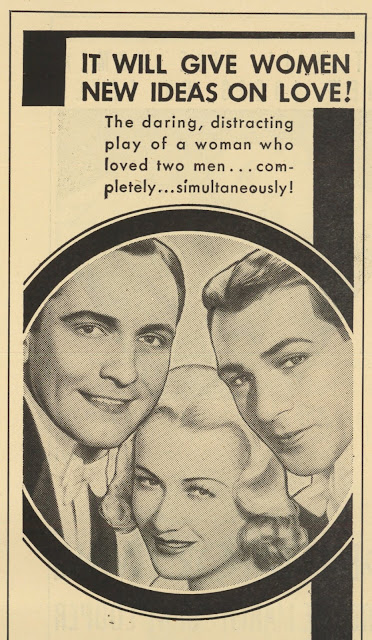Metro Tames More Wilderness
Eskimo (1934): Where Precode Melted Snow
A last epic journey MGM would take for a time, maybe for all time. It wasn’t just them going to explore remote places. They had to haul cast/crew, equipment, and bring back a dramatic feature, which was more than anyone asked of Scott, Byrd, and others who took to the ice. We’ve enshrined these among wilderness immortals --- why not W.S. Van Dyke? He directed in every rugged clime, overcame nature’s fury hot or cold, and came home with merchandise to educate and entertain a truly mass audience. Van Dyke should be more celebrated than he is, for not just far-flung adventures, but expert studio confections he did later. Premature death (1943) seems to have closed books on proper appreciation for Van Dyke.
Eskimo was begun in 1932 and took nearly a year to complete. This was expected, for Trader Horn had been very much a same ordeal, even as it paid out enormously once done and shown to a thrilled public. You simply could not buy this kind of authenticity on a backlot. Van Dyke had cleverly recycled unused Trader Horn to do Tarzan, The Ape Man, which was produced on Culver grounds, but looked as convincing as what a 1932 industry could achieve. The Horn-fed audience, ready and waiting for another dish, took Tarzan to profits the impetus for a series to last decades. A lot of what sold Tarzan was promise of earthy sex between ape man and captive girl, the jungle background one where inhibitions could be shed and not missed. Precode made such treatments possible, and Eskimo would give further peek into love habits of a primitive people not shackled by standards like ours. The ice-bound follow-up should have clicked, but didn’t. Was it crowd insistence that sex be served hot rather than cold? Or maybe Eskimos were too alien for other cultures to embrace. Even a frozen north had few of them left as understood (or misunderstood) by moderns. These people too had embraced comforts of civilization, Van Dyke finding that out when he tried to get native help in recreating harsh conditions he assumed they lived from day-to-day.
Few studies of precode mention Eskimo. They should, because it is remarkably explicit, going well beyond what I expected, and I expected a lot, based on ads of the time that talked of wives shared among the tribes and igloos warmed by multiple partners for Eskimo men. And this was a movie that delivered on the bally. I’m surprised it didn’t sock over a huge gross. Certainly MGM sales got behind it. Their pressbook was enormous, a largest I’ve seen from whole of the 30’s. You’d think this plus affiliated theatres, along with thousands more on Loew’s contract, would have gotten over the fence, but no. East coast staff surely analyzed this failure over many a late night cup. A highest-profile MGM release losing money was rarity enough to suggest something in the product that kept patronage away. Maybe the exotics had played out. Anyway, it wasn’t worth risk of gamble on another. Shooting was, after all, more manageable when close to home, process/trick work progressed far enough to make far-off fakery at least seem for real. And maybe its public preferred a
 |
| Van Dyke as Performer, with Ray Mala |
If so, then Eskimo was a last blast of the real. Van Dyke had natives speak their language with no recourse for watchers other than to titles from a silent era long gone. This is sustained through all conversation among the Eskimos, and that, of course, is bulk of dialogue. Action segments don’t need talk, several going a reel at chase after wild game, or flight from a marauding polar bear. This stuff is exciting, and working with animals meant anything could happen. Based on accounts, the polar bear got frisky and went after crew members, so life-or-death wasn’t altogether confined to screen action. The wife trading, spelled right out as it was, forms nucleus of the story, being basis of the conflict that makes a fugitive of Eskimo lead Ray Mala, himself a native who had lived for a while in



























































